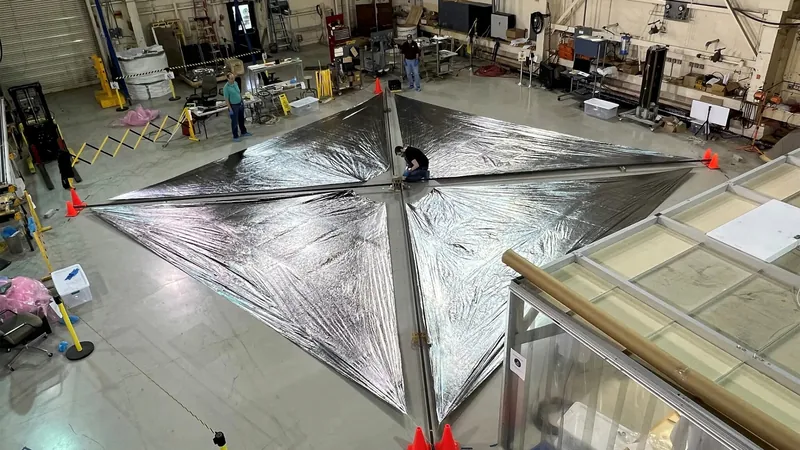
Revolutionizing Space Weather Alerts: The Game-Changing Solar Sail Spacecraft
2025-08-03
Author: Wei
A New Era for Earth’s Space Weather Protection
As our reliance on technology grows, so does the precariousness of our electric grids, aviation systems, and telecom networks—all vulnerable to the whims of space weather. Enter a groundbreaking initiative: a spacecraft powered by solar sails, designed to deliver significantly earlier warnings about these cosmic threats.
Understanding Space Weather: The Dangers Lurking Above
Space weather describes the unpredictable variations stemming from the Sun, a major actor in events like solar flares and Coronal Mass Ejections (CMEs). These events can travel at staggering speeds—up to 1,242 miles per second—bringing with them chaos that can disrupt satellites, cripple electrical grids, and expose astronauts to dangerous radiation.
Historical data reveals the threat: the infamous Carrington Event of 1859 wreaked havoc across telegraph systems, while a similar event in 1972 almost endangered astronauts on a lunar mission. Just last year, a moderate space weather episode led to the loss of 39 Starlink satellites!
Current Monitoring Limitations
Existing satellites that monitor solar wind and solar events are primarily positioned either close to Earth or far upstream at the L1 Lagrange point—900,000 miles from our planet. While they provide vital data, they currently offer a warning of just about 40 minutes before an impending event strikes.
Introducing SWIFT: A Game-Changer for Space Weather Warnings
Why settle for 40 minutes when we could have more? SWIFT, or the Space Weather Investigation Frontier, aims to break this mold, positioning a satellite over 1.3 million miles from Earth to provide nearly 60 minutes of advance notice. This could empower satellite operators, airline pilots, and even astronauts heading to Moon or Mars with the precious gift of time.
Harnessing the Power of Solar Sails
To achieve this ambitious goal, SWIFT employs an innovative solar sail propulsion system. Unlike conventional rockets, a solar sail—akin to a giant reflective surface—harnesses sunlight’s momentum to navigate through space without depleting fuel.
Successful solar sail missions, like NASA's NanoSail-D2, have already paved the way, proving this technology's potential. The next step? A sail with a staggering 17,793 square feet of area set to launch by 2029!
A New Frontier in Space Weather Monitoring
SWIFT aims to deploy a constellation of four satellites—one utilizing the solar sail and three with traditional propulsion—strategically placed to offer unparalleled surveillance of solar winds. This enhances our understanding of how space weather evolves, ultimately safeguarding both our terrestrial and space-based technologies.
A Call to Action for a Safer Future
As our modern lives intricately intertwine with technology, investing in advanced space weather prediction systems is not just beneficial; it's essential. With SWIFT leading the charge, we are on the brink of a new era of protection against the unpredictable forces of nature.




 Brasil (PT)
Brasil (PT)
 Canada (EN)
Canada (EN)
 Chile (ES)
Chile (ES)
 Česko (CS)
Česko (CS)
 대한민국 (KO)
대한민국 (KO)
 España (ES)
España (ES)
 France (FR)
France (FR)
 Hong Kong (EN)
Hong Kong (EN)
 Italia (IT)
Italia (IT)
 日本 (JA)
日本 (JA)
 Magyarország (HU)
Magyarország (HU)
 Norge (NO)
Norge (NO)
 Polska (PL)
Polska (PL)
 Schweiz (DE)
Schweiz (DE)
 Singapore (EN)
Singapore (EN)
 Sverige (SV)
Sverige (SV)
 Suomi (FI)
Suomi (FI)
 Türkiye (TR)
Türkiye (TR)
 الإمارات العربية المتحدة (AR)
الإمارات العربية المتحدة (AR)